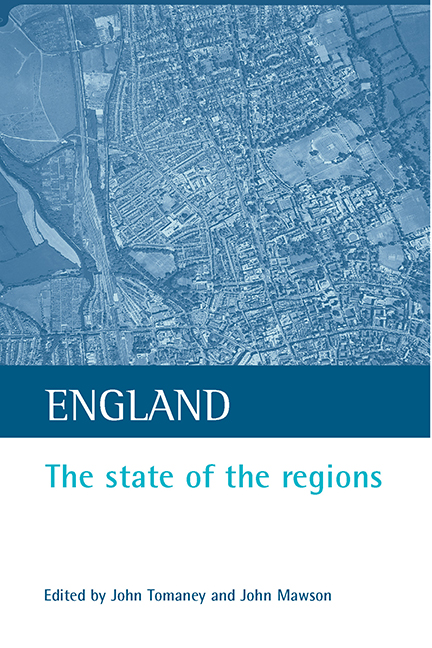Book contents
- Frontmatter
- Contents
- List of tables and figures
- Acknowledgements
- List of contributors
- one Introduction
- two Regional government in England: reviewing the evidence base
- three New Labour and the evolution of regionalism in England
- four Yorkshire (and the Humber)
- five Institutional collaboration in the West Midlands region
- six England's North West
- seven The South West
- eight Regionalism in the East of England
- nine The South East region?
- ten Regionalism in North East England
- eleven Regional strategy development in the East Midlands
- twelve The problem of regional governance
- thirteen Elected regional government: the issues
- fourteen Barnett plus needs: the regional spending challenge in Britain
- fifteen Conclusion: prospects for regionalism
- Index
- Also available from The Policy Press
thirteen - Elected regional government: the issues
Published online by Cambridge University Press: 20 January 2022
- Frontmatter
- Contents
- List of tables and figures
- Acknowledgements
- List of contributors
- one Introduction
- two Regional government in England: reviewing the evidence base
- three New Labour and the evolution of regionalism in England
- four Yorkshire (and the Humber)
- five Institutional collaboration in the West Midlands region
- six England's North West
- seven The South West
- eight Regionalism in the East of England
- nine The South East region?
- ten Regionalism in North East England
- eleven Regional strategy development in the East Midlands
- twelve The problem of regional governance
- thirteen Elected regional government: the issues
- fourteen Barnett plus needs: the regional spending challenge in Britain
- fifteen Conclusion: prospects for regionalism
- Index
- Also available from The Policy Press
Summary
So, then, let's strike a northern light
To blind those armies of the night
Who always place a southern spin
Around the state we’re living in.
(A Northern Assembly, Sean O’Brien, 2001)This book has so far outlined the present state of play on the governance of the English regions. This chapter examines the processes required – and decisions to be made – in order to establish directly elected assemblies in any or all of the regions.
During the 2001 General Election campaign, the Deputy Prime Minister announced a commitment to publish a White Paper on the subject, holding out the prospect of a timetable similar to that for devolution in Scotland and Wales. This complemented the statement in the Labour Party Manifesto, repeating that of 1997, which constituted a clear commitment:
In 1997 we said that provision should be made for directly elected regional government to go ahead in regions where people decided in a referendum to support it and where predominantly unitary local government is established. This remains our commitment. (Labour Party, 2001, p 35)
In the months prior to publication, the government has remained very tight-lipped about the contents of the Regional Government White Paper. The minister responsible, Nick Raynsford, won praise for his extensive efforts of consultation over the paper, but very little public support was forthcoming from colleagues. The issue was relegated well behind the totem of second-term service delivery and finally appeared in May 2002.
The more complex departmental responsibilities for regional government put in place after the 2001 General Election may not in themselves advance the cause. The public commitment to a White Paper and (implicitly) to early legislation, with the continuing lead responsibility of the Deputy Prime Minister (the only senior member of the government with a known personal commitment to elected regional government) mark a long step forward from the ambiguous record of the 1997 government.
Even so, giving effect to the Manifesto Commitment was not going to be plain sailing.
- Type
- Chapter
- Information
- EnglandThe State of the Regions, pp. 173 - 186Publisher: Bristol University PressPrint publication year: 2002



